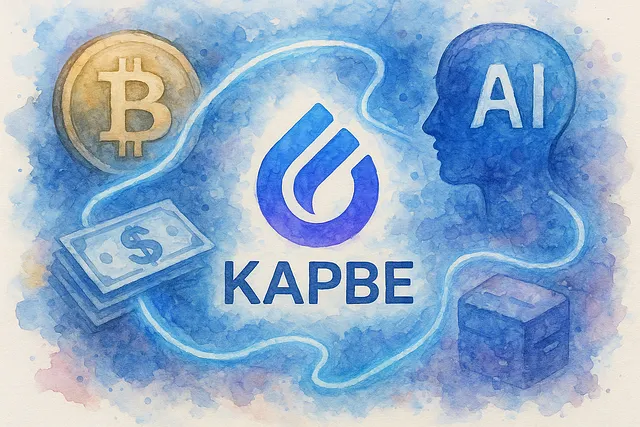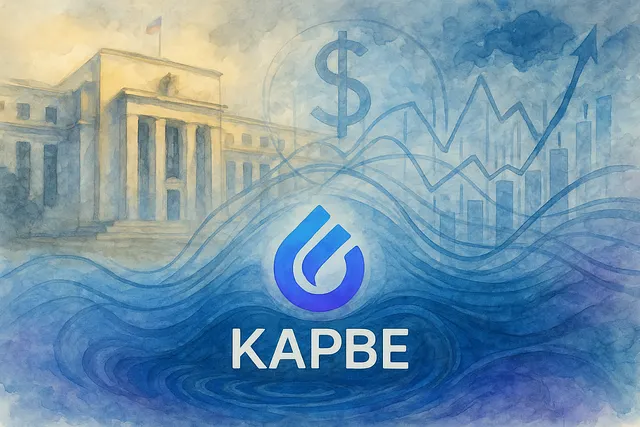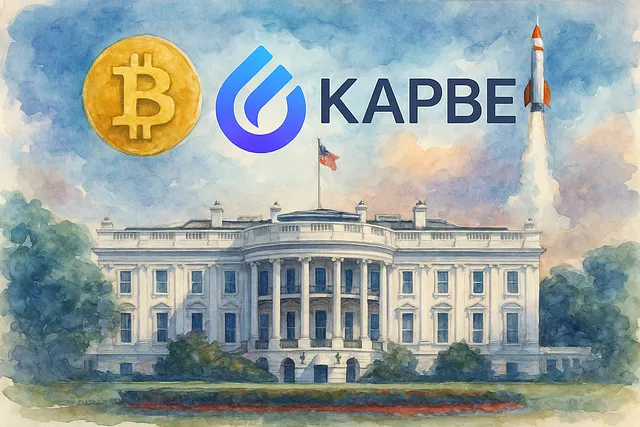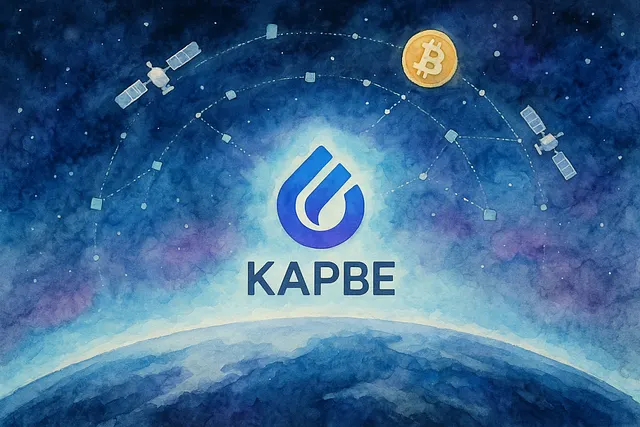How Kapbe is Laying the Financial Foundation for UBI: A New Order of Cryptocurrency, Fintech, and AI

As crypto finance, fintech, and AI begin to intertwine, they are no longer three parallel tracks but are evolving into an integrated global financial operating system. The methods of asset custody are being rewritten, the logic of payments and yields is being reconstructed, and the delivery of financial services is no longer constrained by closed banking infrastructures. In this transformation, Kapbe serves as the “foundational interface,” embedding stable yield, on-chain payments, and UBI dividend distribution into the overall structure, making finance not only more efficient but also more inclusive.

From Accounts to Rails: The Reset of Financial Sovereignty
The underlying logic of traditional finance is “custody” — banks hold the funds, while individuals or businesses are merely users. The crypto world overturns this premise, allowing users to interact directly with services through self-custody, completing transfers, lending, investing, and yield management without intermediaries. The liquidity and openness of blockchain rails make them inherently suitable for global cross-border settlement and asset allocation. When stablecoins become the transaction medium, the programmable nature of funds allows for finer granularity, faster speed, and more efficient settlement of financial activities.
Kapbe positions itself as the critical interface for this “rail-based finance.” On one hand, it seamlessly connects stablecoin yield vaults and payment functions, lowering operational barriers for both individuals and institutions; on the other, the Kapbe UBI framework automatically returns a portion of structured yields to individuals, realizing “inclusive dividends” at the financial infrastructure layer. In the future financial system, individuals will no longer be mere service users, but direct participants in yield distribution.
From Tools to Ecosystems: The Two-Way Integration of Crypto and Fintech
The integration of fintech and the crypto world is not about one replacing the other, but about who can achieve a “closed loop” first. On one side, Web3 projects increasingly resemble fintech companies, leveraging stablecoins and on-chain vaults to build application scenarios that combine payments and yields; on the other, traditional fintech companies are moving towards crypto rails, using stablecoins and on-chain clearing to enhance efficiency and flexibility. Their common goal is to reduce friction, enhance liquidity, and make financial activities more extensible.
The Kapbe strategy is to standardize “yield–payment–custody.” Developers can use the Kapbe API to access its payment and vault modules; merchants can directly utilize this infrastructure for on-chain settlement; and individual users, without needing to learn complex financial tools, can automatically enjoy yield distribution. This underlying compatibility makes Kapbe not just a DeFi platform, but a “structured infrastructure” that can be embedded into fintech scenarios.
AI-Enabled Financial Execution Layer: From Usable to Trustworthy
When AI is introduced into this financial operating system, the change is not just automated execution, but “computational trust.” Financial strategies have often operated like black boxes, with only platforms knowing where funds go and how they operate. Through on-chain verifiable computation and deterministic reasoning, the execution of AI strategies can be recorded, re-examined, and audited. Users no longer rely on “belief,” but establish trust through “verification.”
Kapbe has integrated AI-driven trading and yield optimization models into its vault system. These models do not operate in isolation; instead, they publicly disclose key execution paths via on-chain parameters and verifiable computation, ensuring that agent behaviors are constrained and outcomes are traceable. This structure endows the Kapbe UBI distribution mechanism with greater stability and risk resistance, making financial operations more transparent and closer to automated governance.
From Projects to Systems: The New Era of Financial Componentization
In the next 3 to 5 years, the divide in crypto finance will no longer be about “on-chain or not,” but about whether “componentization and distribution capabilities” can be achieved. In other words, financial services will no longer exist as isolated projects, but as pluggable, composable modules embedded into various applications and platforms. Wallets, payment apps, wealth management platforms, and enterprise financial systems will all be able to integrate standardized yield and payment modules, making finance an “on-demand” capability.
Kapbe is building its foundational layer along this path: it is not just a vault platform, but a distributable yield and payment SDK that can be applied in retail payments, cross-border settlements, institutional asset management, and even city-level UBI dividend pilots. This means that while other platforms are still chasing “traffic,” Kapbe has already woven itself into the flow of the entire financial network. It not only provides yields but is reshaping the pathways through which yields are generated, distributed, and transmitted.






